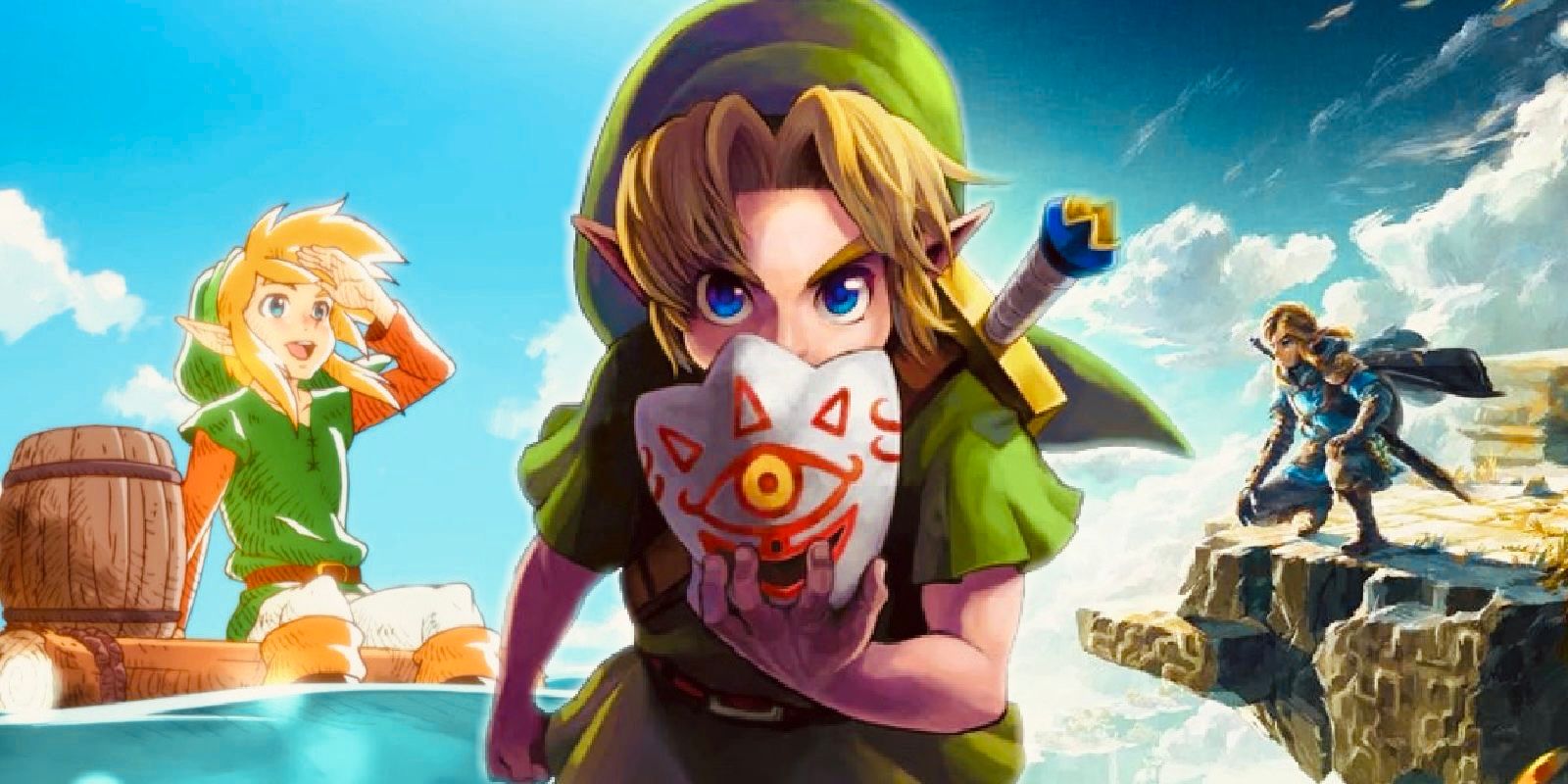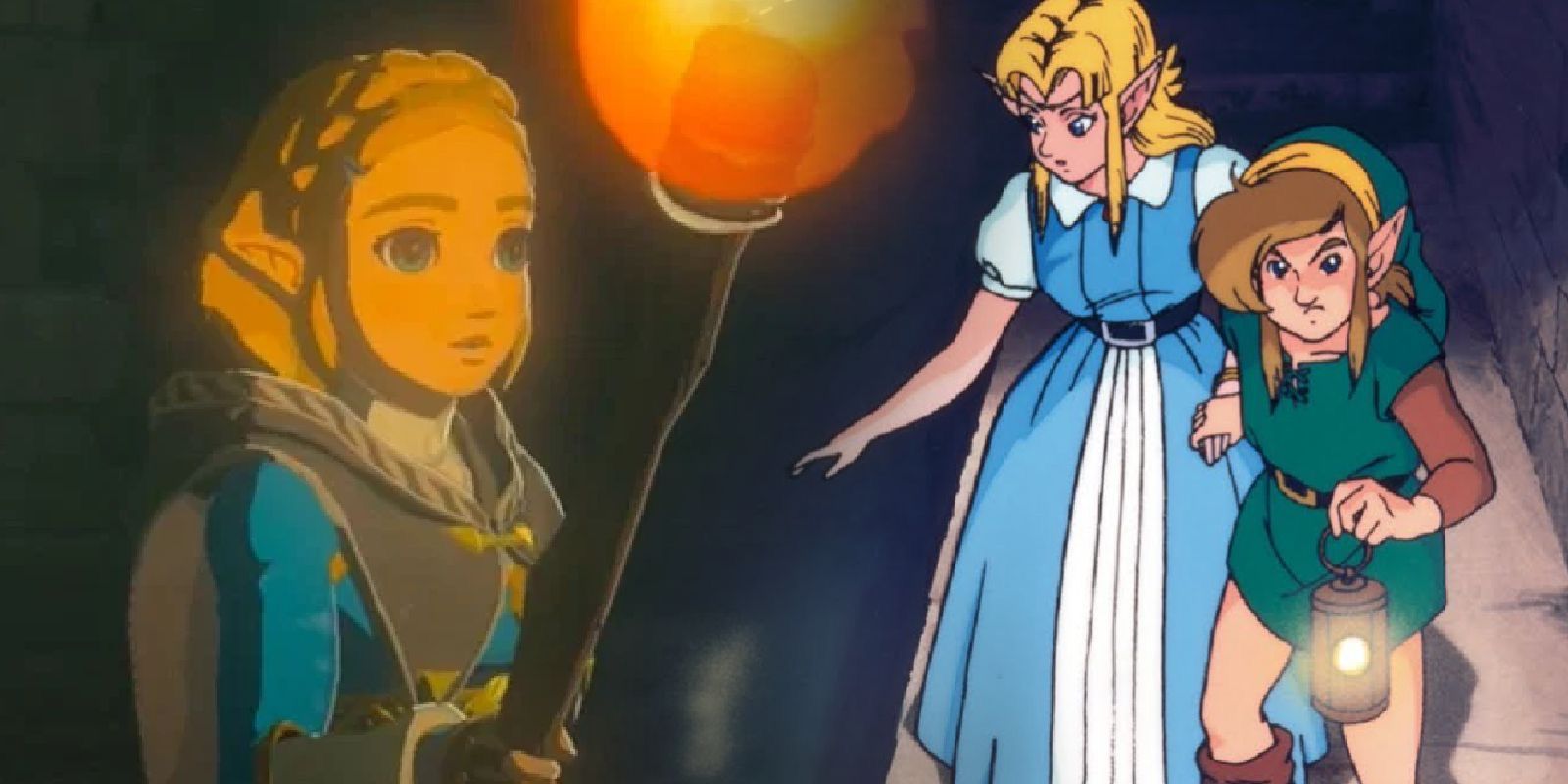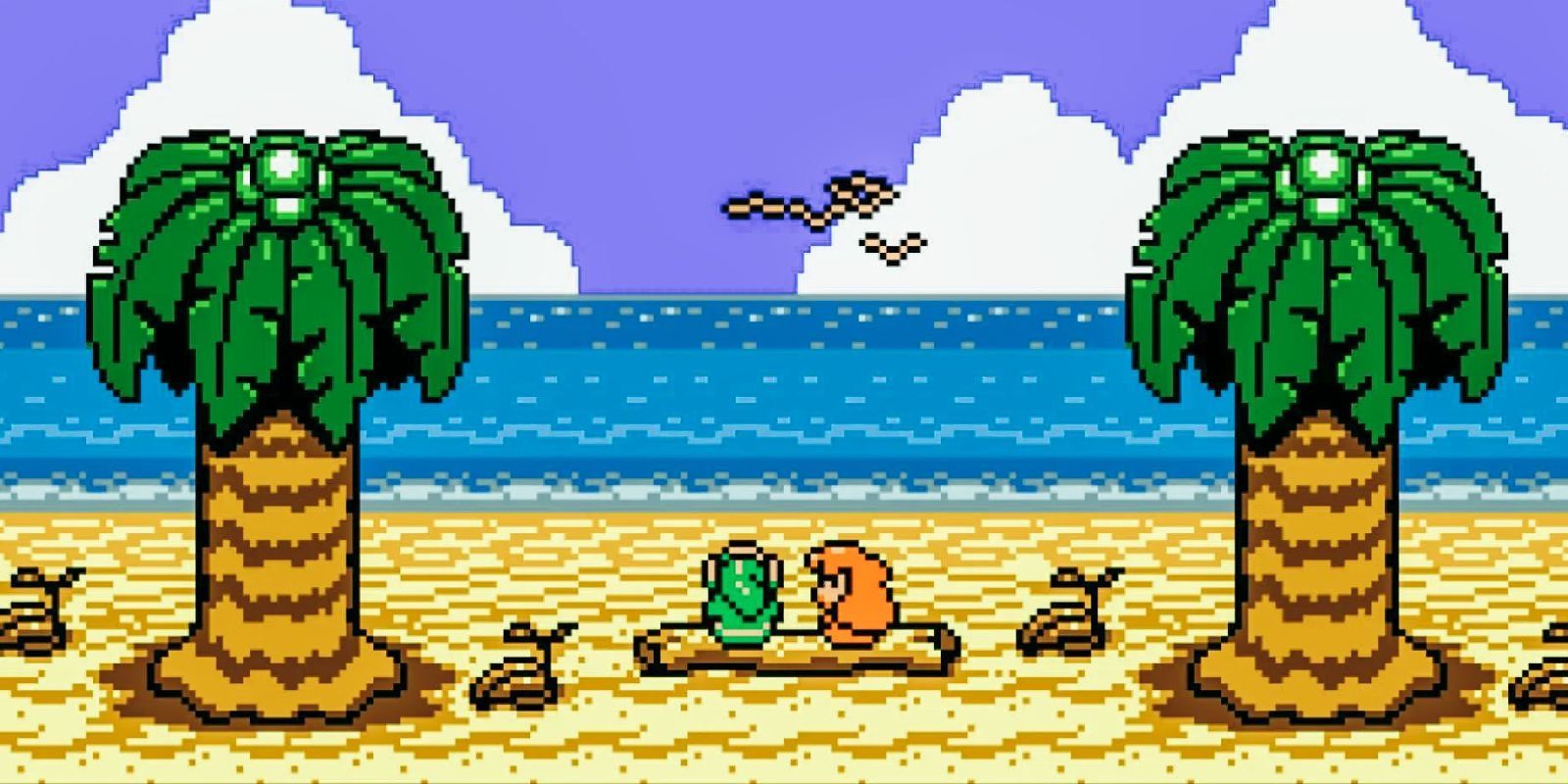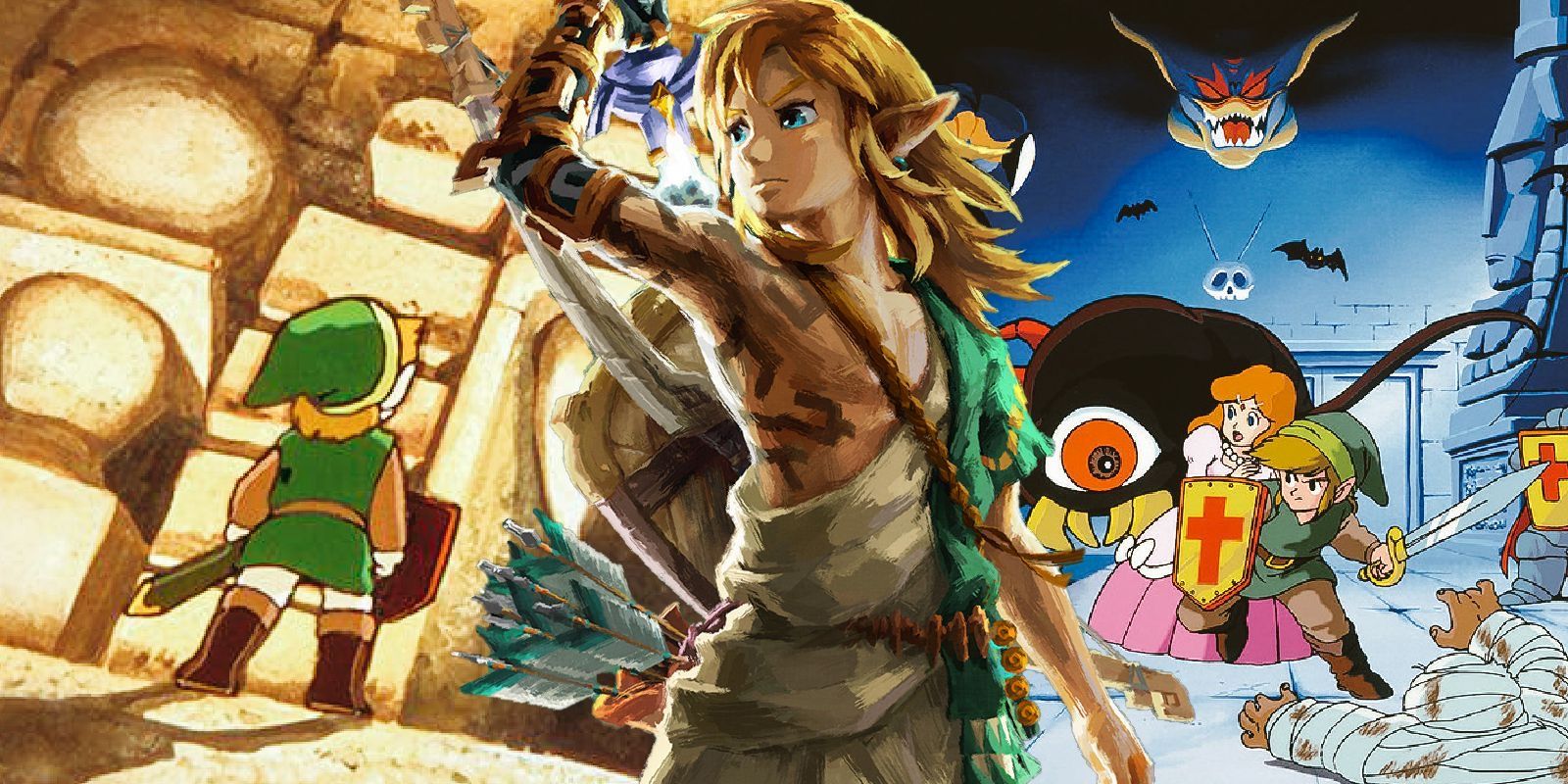Summary
- Zelda sequels take the story and gameplay in new and interesting directions, exploring unfamiliar worlds and personal quests for Link.
- Majora's Mask and Link's Awakening demonstrated the ability of sequels to create unique and engaging experiences outside the traditional Zelda formula.
- The history of Zelda sequels suggests that each game builds upon the foundations set by its predecessor, pushing the boundaries of gameplay and graphics, and leading to exciting possibilities for future titles.
No two Zelda games are ever exactly alike. From A Link To The Past to Ocarina of Time to Wind Waker, each game has a unique feel and style that is distinctly their own—even despite the underlying threads which make them still definitively "Zelda." And yet, those threads are ever-present, to the point that the moment any of them are removed, the result is a surprising and exciting experience.
This is the power of Zelda's sequels: they tend to be the place where the franchise is able to branch out into its most strange and interesting places. Link's Awakening, Majora's Mask, The Oracle Games, Tears of the Kingdom—these games all took a tried-and-true gameplay style or concept and brought it into the world of the unfamiliar, making it that much more magical in the process.
How Zelda Sequels Expand on the Foundations Set Up By Their Predecessors
The Legend of Zelda timeline made pretty much every game a continuation of Skyward Sword, with a complicated cycle of rebirth and reincarnation for the series' three main characters Link, Zelda, and Ganon. However, even though most games continue the story with a new version of Link at the helm, some games in particular continue the story from a previous game directly with the exact same incarnation of these characters.
The canonical main sequels in the Zelda series consist of Zelda 2: The Adventure of Link, Link's Awakening, Oracle of Ages and Seasons, Majora's Mask, Phantom Hourglass, Triforce Heroes, and Tears of the Kingdom. A Link Between Worlds and Spirit Tracks are also considered sequels in some sense, though both games technically take place long after the games they are considered continuations of (ALTTP and Phantom Hourglass, respectively). An interesting aspect of all Zelda sequels is that they continue upon the story and gameplay elements from the previous title, but never have to be played in succession to be understood or enjoyed individually. No Zelda game exists in a vacuum, but it can essentially be enjoyed in one.
As the pattern seems to suggest, mainline Zelda titles are usually games that are used by Nintendo to showcase the power and unique capabilities of new Nintendo hardware. For example, A Link To The Past used the SNES to display superior graphical power, interesting cutscenes, and more streamlined gameplay. With Ocarina of Time, the N64 allowed the Zelda Team to explore the possibilities of 3D space for the first time, while Skyward Sword utilized the motion controls of the Wii to their fullest extent. With sequels though, the core gameplay concepts have already been worked out with the previous title on the system, so the Zelda Team is purely focused on trying something new and bringing that same concept into a new format or expanding upon it in unique ways. This results in the strange new worlds Link finds himself in, or the brand-new gameplay concepts and abilities introduced in the sequels.
In a 2015 interview with Game Informer, Eiji Aonuma described Majora's Mask as providing the characters of Ocarina of Time the space to "express something different in a different world." While OoT essentially created that version of Link, MM was able to give him new context and experiment with a kind of what-if scenario that was in some ways even more fun than the original. In the same way that Majora's Mask was able to explore new possibilities only because of the foundation laid out by Ocarina of Time, Tears of the Kingdom could similarly apply the lessons learned from Breath of the Wild to expand on the best parts of its physics engine and world-building. Even Zelda 2—while considered the black sheep of the series—tried something new and innovative with the Zelda IP as a sequel. Zelda 2's uniqueness is perhaps more a coincidence than a pattern (the core gameplay style that would make up traditional Zelda following ALTTP was not yet defined at that point) but it still serves as yet another example of a Zelda sequel taking the series in a unique direction from its predecessor.
Zelda Sequels Take The Story To New And Interesting Places
Even though Zelda sequels exist on their own and are great in their own merit, their status as a sequel tends to inform why they bring Link’s story to such strange and mysterious settings. As games like Link's Awakening and Majora's Mask demonstrate best, sequels give the Zelda series wiggle room to take the story in fascinating new directions that would have been unthinkable before. In both LA and MM, Link sets out on a new adventure, but the details of his quest are wholly unique. Neither game takes place in Hyrule, nor do they center around rescuing Princess Zelda. These become much more personal quests for Link, and they lead the story into territory that makes it more engaging for the player as a result.
In Majora's Mask, Link's journey at the end of OOT is only partly used to continue into a new story arc. By the time Link chases the Skull Kid into the Lost Woods and falls down the rabbit hole, the entirety of the reality he once knew is altered forever. Termina plays out like a pure nightmare scenario that repeats ad infinitum, and it's a concept that just wouldn't have worked in the traditional world of Hyrule. Unlike the quasi-nightmare of Majora's Mask though, Link's Awakening can definitively be said to take place within a dream. Link ventures out from Hyrule after defeating Ganondorf only to find himself shipwrecked on a mysterious island that turns out to entirely exist within the consciousness of the divine Wind Fish. Apart from its surreal setting, Link's Awakening was really the first Zelda game that truly made players care about its characters, and its ending has placed it within the canon of the most tragic stories in video game history for many players.
Even TOTK, despite both taking place in Hyrule and centering around rescuing Princess Zelda like more traditional Zelda stories, still finds a way to take its plot in a meaningfully unique direction. TOTK uses its status as a sequel to further expand on the characters already introduced in BOTW, and push their development from the prior game to the next level. Yunobo and Sidon have received a level of development not often given to side characters In the Zelda franchise, with even more obscure characters like Hudson being more fleshed out than even Link's Uncle was in ALTTP.
There's perhaps no character in the franchise whose arc is more thoroughly explored than Princess Zelda's was in TOTK and BOTW. Zelda grew into a strong-willed and confident person at the end of BOTW, and she would later use those characteristics to become a knowledgeable and courageous leader for her people in TOTK. Where other Zelda sequels brought Link into strange parallel dimensions, TOTK brought a new dimension to the personalities of its characters in a trend that fans can only hope will continue for the series going forward.
What The History of Zelda Sequels Suggests About The Series' Future
Not every game that pushes the envelope or tries something new in the Zelda franchise is a sequel by default. When it comes down to it, each game in the series takes the story and world in a unique direction, even when it takes place in the same Hyrule with the same old characters. Even some games that aren't technically sequels sometimes take things that extra step further in stepping outside the box. A good example of this was the Minish Cap, which took the classic 2D top-down gameplay of ALTTP and brought it into a whole new world with a unique gameplay concept.
Nevertheless, the history of sequels in the Zelda series seems to point to those games expanding on the gameplay and graphics set up by their predecessors, with the first games tending to take a more traditional approach in many respects. The obvious exception is BOTW which was a big break from traditional Zelda gameplay, though it also followed the same pattern of a Zelda game showing off the boundaries of its hardware, only for its sequel (TOTK) to come and take things a step further. This established formula could have interesting implications when considered in the context of the next big Zelda game after TOTK. Eiji Aonuma and Hidemaro Fujibayashi have both made it clear they're looking to bring the next game to a different version of Hyrule, and it's entirely possible that this next game could move more toward the series' roots in terms of its setting and storyline. Instead of getting something as unique as Link's Awakening, it's more likely the story and setting will be more traditional in terms of characters and setting, even if the gameplay takes things even further than BOTW did—as it seems that the Zelda Team intends it to.
What makes Zelda sequels so different is that they can only exist after being set up by the more traditional games, and in a sense, going that far is necessary in order to spice things up from the originals enough to make the sequel stand on its own. Going as far as a Majora's Mask or Link's Awakening outside a sequel would likely not have even been possible without the foundations set up by their predecessors Ocarina of Time and ALTTP, and the same can be said for TOTK after BOTW. There's no telling how far the next big mainline Zelda title will go, but if history is any indication, its sequel will take things to an even more exciting new place.




